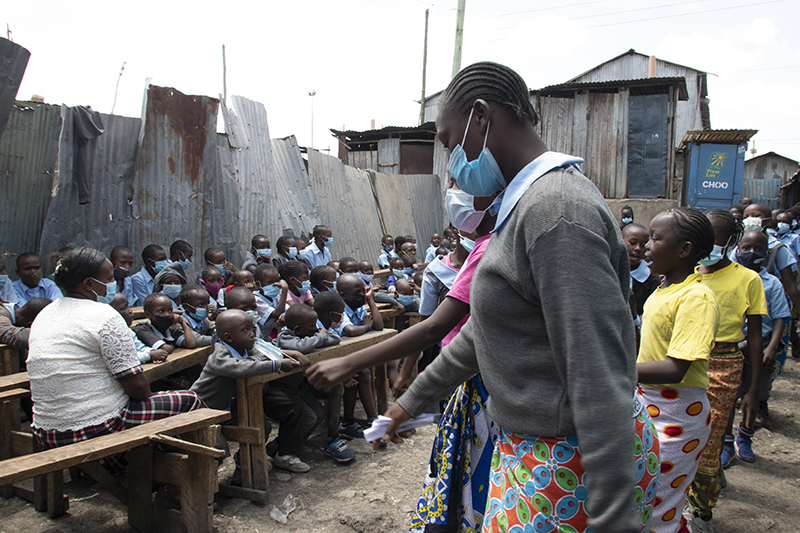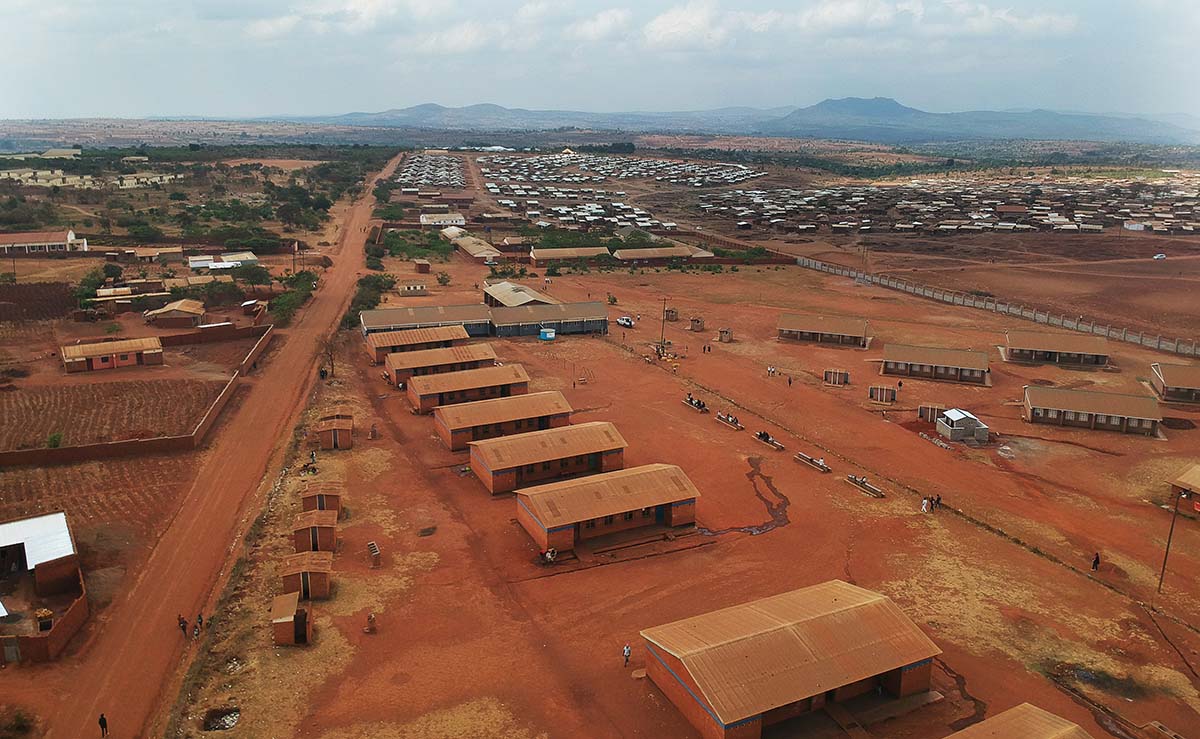Did you know that the difference in quality between a bad teacher and an excellent one can cut or increase the student’s learning by several years? The quality of the teachers is the most important and decisive element in children’s learning and well-being.
In displacement and refugee settings, teachers face extraordinary challenges in addition to those that already exist in vulnerable environments: they have to ensure a safe learning environment, support the emotional needs of children who have experienced or are experiencing extremely difficult situations and foster social cohesion and, on top of the above, in most cases these teachers are refugees who are experiencing the same difficulties as their students, including economic hardship, emotional stress, insecurity and constant uncertainty about their lives.
Therefore, beyond the educational needs of the displaced and refugee children, emphasis must be placed on those of their teachers; the teachers need specific training and support.

Under these circumstances, technology can offer excellent support for the teacher professional development in displacement and refugee settings. Digital technologies can provide the educators with access to quality professional learning content to enrich their classroom practice, support quality teaching and learning in their local context and further their professional development. It can also provide them with the chance to connect with their peers through virtual and local communities of practice in order to share resources and experiences and help each other to grow within a support network.
However, these digital training solutions must be well-designed in order to fully meet the needs of these teachers, who are enduring an extremely difficult and particular situation. As explained by the Inter-Agency Network for Education in Emergencies (INEE), the education ecosystem in displacement situations is complex and lacking resources at all levels. Numerous teachers in refugee settings suffer from a partial or total lack in connectivity. Moreover, the teachers frequently lack the personal knowledge and guidance to identify rich, diverse and relevant training opportunities.
Based on its years of experience in the field, the INEE has drawn up a report that identifies the key challenges and opportunities related to digital teacher professional development in displacement and refugee settings and makes a series of recommendations to harness the new teacher education technologies in these environments. Below we summarise the main findings of the report in terms of challenges and opportunities.
Technology can offer excellent support for the teacher professional development in displacement and refugee settings.
Challenges: a lack of data, contextualisation and teacher support
Research and data shortcomings. The research into the digital teacher professional development, open educational resources (OER) and professional learning for teachers in refugee environments is rather limited. The limited and anecdotal ongoing research is hampered by a lack of available data (the data on education in refugee settings are difficult to track) and an absence of funding, among other factors.
A lack of coherence and sustainability in the design of the teacher professional development programmes. Although some guidelines for teacher professional development in emergency and crisis contexts exist, many actors on the ground don’t take into account local needs (specific language requirements, connectivity challenges, digital fluency or the educators’ interests and needs). Moreover, the initiatives often focus on specific isolated aspects without connecting them to broader efforts or creating sustainable plans for their ongoing use and impact.
Limited development of local ownership and leadership. The digital teacher professional development endeavours fail to capitalise on local expertise, leadership and ownership to support the projects’ sustainability. As a result, although they prove popular, the train-the-trainer models often disappear as the external support, be it financial or of any other kind, dwindles.
No use is made of the teachers’ experience, capacity for action and resilience. The teachers’ experience, knowledge and action are often overlooked. The teachers can be co-creative partners in the evolution of the digital teacher professional development materials and help to popularise and support the adoption of resources by introducing new technologies and tools to their colleagues.
The high cost of basic technologies in contexts with fewer resources. The ITU’s data centre indicates that the cost of the “low-consumption mobile data and voice basket”, a common solution available in displaced contexts and others with fewer resources, accounted for 38% of Niger’s gross national income per capita in 2021, higher than the figures of 25% in Chad, 4.5% in Kenya, 3.9% in Lebanon and less than 1% in the richest nations.
Visibility, accessibility and user-friendliness issues. The teachers often report difficulties in finding and using the digital resources with any confidence. Sharing the resource URLs isn’t enough; in many cases the teachers require further support to become familiar with the resources, evaluate them and adapt them to their local needs and ultimately feel confident and competent in the use of new resources or tools.
A lack of motivation and morale among the teachers. In displacement contexts teachers of the most disadvantaged and marginalised children are often disadvantaged themselves in both personal and professional terms. Encouraging their participation and sustaining it throughout their digital teacher professional development is therefore a major challenge to be overcome if the success of the initiatives and a positive and lasting impact are to be guaranteed.
The safety and well-being of the teachers isn’t prioritised. Just like the children they teach, the teachers also need to feel safe, included and supported before they’re asked to take on additional challenges.
Recognition and certification channels are required. Educators in EiD contexts need recognition, certification and pathways to degree and accreditation programmes, particularly if they’re displaced and without any prior professional experience in the field of education, if they don’t have any documents indicating their prior experience or learning or if they have credentials that aren’t recognised in their displacement setting.
The opportunities: digital education now forms part of the Agenda
Distance learning now forms an integral part of global education. The importance of
and ubiquity of distance learning was undeniable during the COVID-19 pandemic. As a result there’s a high degree of interest within the global education ecosystem in the effective and equitable use of digital learning materials and tools. This provides an opportunity to make digital teacher professional development more accessible, equitable, attractive and impactful.
The digital gap in education and issues related to educational equity have become more prominent. In recent years the gaps in terms of digital access, literacy and fluency have increased, prompted by challenges such as a lack of or limited infrastructures. Increasingly, educational designers, together with agents involved in education, development and the humanitarian sector, are designing and/or using options to provide offline access to digital materials. Public-private partnerships have also been forged to specifically address issues such as access to electricity, Wi-Fi, devices and digital literacy.
Mobile devices are (more or less) ever-present. The global statistics indicate that there are more than 6.5 billion smartphone users in the world. The majority of teachers, including those in the most remote areas, have smartphones, although they don’t belong to the latest generation and they aren’t always able to charge and connect them due to the limited electricity and/or Wi-Fi infrastructures. Teachers are thus finding a path to digital teacher professional development in many parts of the world.
Creative solutions are being found to expand teacher professional development. There’s a growing awareness of the need to find and use the technologies best suited to each context. Technology will undoubtedly form part of any teacher professional development programme, but it must be able to function in online, offline and mixed formats.
The teachers lie at the centre of the debate. The crucial importance of teachers in the education ecosystem and the need to attract and retain them by means of a global revaluation of the profession was a cross-cutting theme at UNESCO’s Transforming Education Summit held in October 2022.
Teachers are key to the success of any education system and displacement and refugee settings are no exception. Moreover, it could be said that the role of teachers is even more important in these contexts, as they’re often the only educational resource available to the students. Providing them with quality and tailored help, support and professional development is essential in ensuring the future chances of the millions of children who depend on them.






